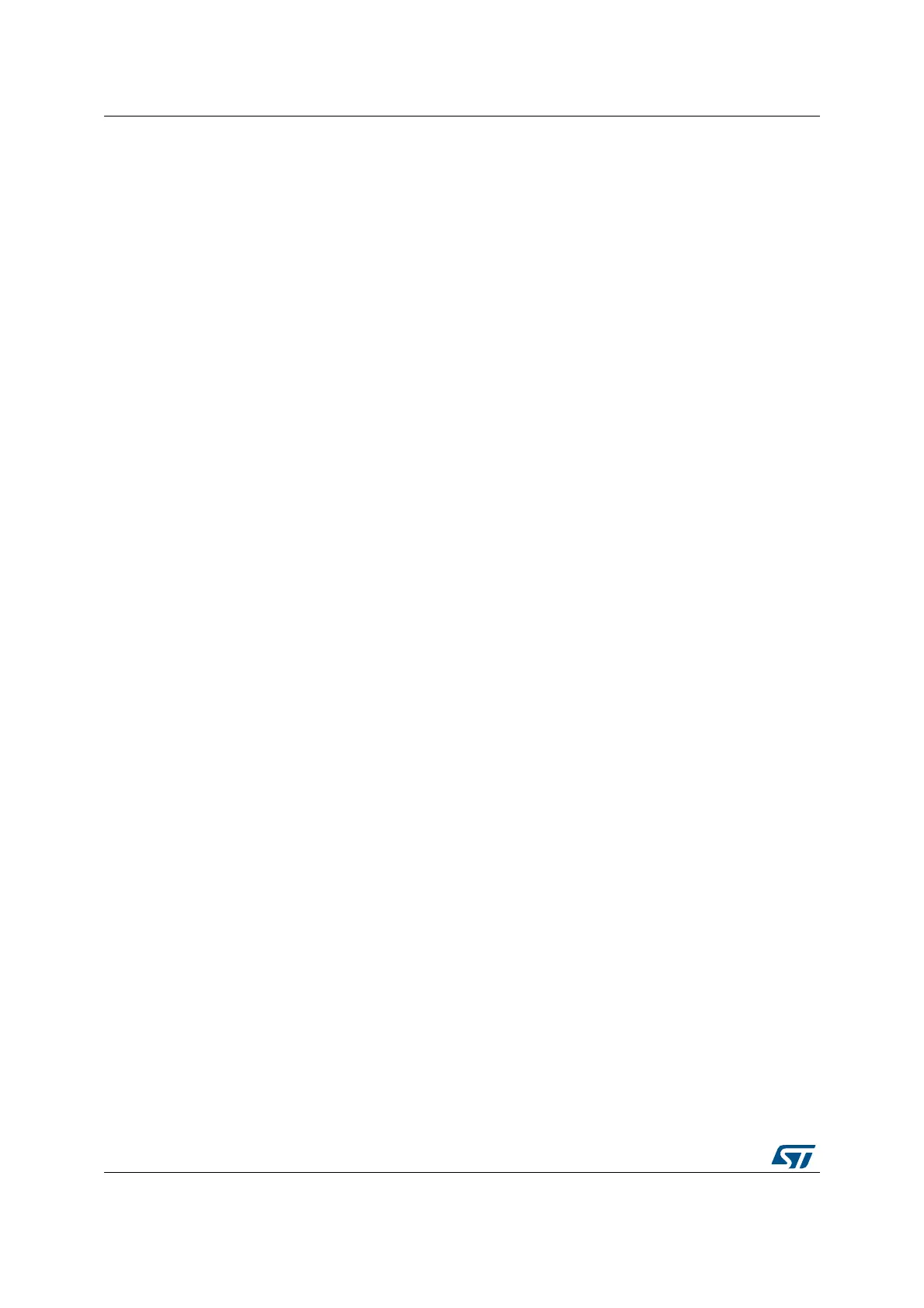Filter math accelerator (FMAC) RM0440
500/2126 RM0440 Rev 4
The filter is started by writing to the FMAC_PARAM register with the following bitfield values:
• FUNC = 8 (FIR filter);
• P = N (number of coefficients);
• Q = “Don’t care”;
• R = Gain;
• START = 1;
If less than N + d -
2
FULL_WM
values have been pre-loaded in the X1 buffer, the X1FULL flag
remains low. If the WIEN bit is set in the FMAC_CR register, then the interrupt request is
asserted immediately to request the processor to write
2
FULL_WM
additional samples into the
buffer, via the FMAC_WDATA register. It remains asserted until the X1FULL flag goes high
in the FMAC_SR register. The interrupt service routine should check the X1FULL flag after
every
2
FULL_WM
writes to the FMAC_WDATA register, and repeat the transfer until the flag
goes high. Similarly, if the DMAWEN bit is set in the FMAC_CR register, DMA write channel
requests are generated until the X1FULL flag goes high.
The filter calculates the first output sample when at least N samples have been written into
the X1 buffer (including any pre-loaded samples).
When
2
EMPTY_WM
output samples have been written into the Y buffer, the YEMPTY flag in
the FMAC_SR register goes low. If the RIEN bit is set in the FMAC_CR register, the
interrupt request is asserted to request the processor to read
2
EMPTY_WM
samples from the
buffer, via the FMAC_RDATA register. It remains asserted until the YEMPTY flag goes high.
The interrupt service routine should check the YEMPTY flag after every
2
EMPTY_WM
reads
from the FMAC_RDATA register, and repeat the transfer until the flag goes high. If the
DMAREN bit is set in the FMAC_CR, DMA read channel requests are generated until the
YEMPTY flag goes high.
The filter continues to operate in this fashion until it is stopped by the software resetting the
START bit.
18.3.9 Implementing IIR filters with the FMAC
The FMAC supports IIR filters of length N, where N is the number of feed-forward taps or
coefficients. The number of feedback coefficients, M, can be any value from 1 to N-1. Only
direct form 1 implementations can be realized, so filters designed for other forms need to be
converted.
The minimum memory requirement for an IIR filter with N feed-forward coefficients and M
feed-back coefficients is 2N + 2M:
• N + M coefficients
• N input samples
• M output samples
If M = N-1, then the maximum filter length that can be implemented is N = 64.
As for the FIR, for maximum throughput a small amount of additional space, d1 and d2,
should be allowed in the input and output buffer size respectively, making the total memory
requirement 2M + 2N + d1 + d2.
The buffers must be configured as follows:
• X1_BUF_SIZE = N + d1;
• X2_BUF_SIZE = N + M;
• Y_BUF_SIZE = M + d2;

